Elizabeth Willing
From Food and to the Foundry: Looking at the artist's time at the UAP Brisbane workshop
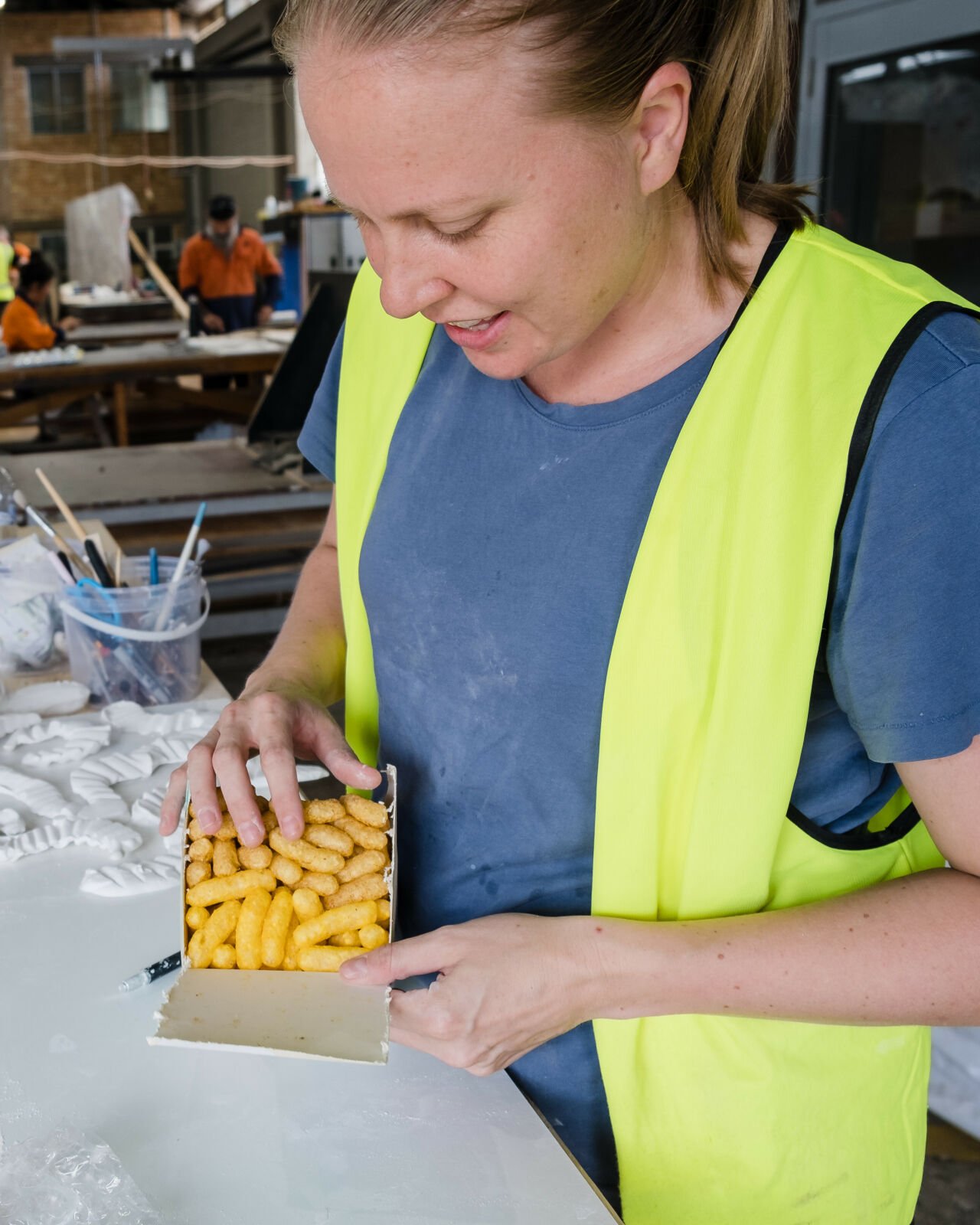
Brisbane-based artist Elizabeth Willing transforms how we look at food and its relationship with contemporary art. Through sculpture, performances, events, and installation, Willing has created a world where the audience embarks on a multisensory experience based on cultural rituals and understandings of food and everything edible. Our team in Brisbane was fortunate to have Willing embark on an almost three-and-a-half-week residency exploring further her creative practice. Below is an interview with UAP Principal Daniel Clifford.
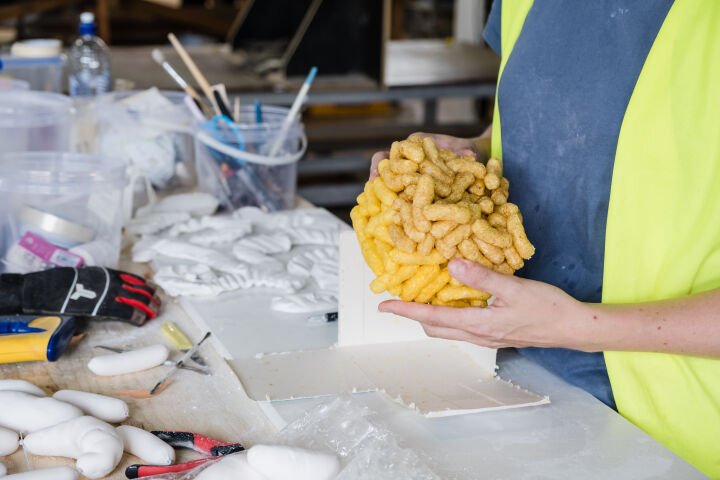
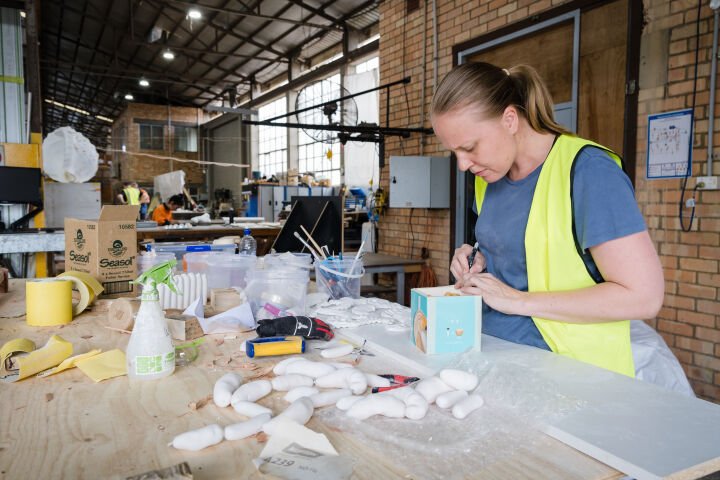
Daniel Clifford (DC) I'm curious to hear about your first investigations and experiments with making art and what inspired you to pursue becoming an artist.
Elizabeth Willing (EW) Much of my childhood was spent in my parent's workshop; my father is a blacksmith, and he and my mother ran a business together. Likewise, my mother spent her spare time on ceramics. I helped them do work and did my own experiments along the way. In addition, I was devoted to collecting and assembling a spectrum of materials from nature to create absurd sculptures with.
As a teenager, I met a woman who was a practising artist, I had not been exposed to many females in this field, so it formalised something that I thought was impossible. From that point on, I pursued art as a career.
(DC) What would you say are the main conceptual drivers that propel your work?
(EW) My fascination with food and the performance of eating stems from my early life growing up in a household of complicated food relationships; I came away with a strong sense that eating was deeply linked to psychology and mental health. Over the past 15 years, I have been trying to understand and articulate how food and eating are connected to love, depression, ethics, and identity.
I am captivated by materials, their malleability, and their transformative qualities. This has led me to work with materials as diverse as butter, sherbet, timber, marshmallow, wax, potatoes, shortbread, chocolate, or plant-based sedatives. Food offers an intuitive catalyst to implicate audiences' bodies in new ways, allowing me to reflect on eating performance and facilitate multisensory experiences in an otherwise ocular-centric context. Hospitality is a useful and somewhat universal framework to understand the relationships that develop in my artworks between the audience, artist and artwork. My art objects are the mediator and outcome of performing hospitality.
Through my research, I have developed a fascination with industrial food systems and how they shape our cuisine. I also look to haute cuisine for inspiration; I am curious about how the restaurant's physical space and the meal's performance influence and choreograph the diner.
(DC) Your work often combines collaborative aspects with an audience; what would you consider to be one of your most memorable collaborations?
(EW) Many of my performances and some of my installations are open to participation and co-creation. One example is Kernel – in this work, I serve fresh boiled corn on the cob to gallery guests, who are invited to season their corn on a 25-30kg block of butter. The butter surface is transformed, melted and marked with traces of rolled and smeared corn cobs. The nuances of each guest's approach to consumption are captured on the buttered surface. The next day the butter is cooled, a mould created, and cast in a cement-like material – hosting is no longer possible, and the performance is sublimated into the sculpture. For me, this is a memorable undertaking because it balances the simplicity of service with the complexity of mould making– but for guests, the memory becomes concrete, embedded in the work.
(DC) What kind of future projects would you like to work on and pursue?
(EW) I absolutely love making spaces - wallpaper, furniture, sculpture, sensory experiences, and performances all coming together in one space. It is deeply satisfying to make immersive works that transform gallery spaces and bring together works that cross-pollinate one another. I aim to take this vision and research and develop it into a concept restaurant. Of course, a large part of my practice over the past ten years has been the creation of concept meals and performances that use the table as a stage for a series of intimate multisensory experiences using custom eating utensils – so I have been working up to this. A concept restaurant would allow me to build the experience from the ground up; every element in the space would be sculptural and driven conceptually by sensory science.
(DC) What has been among the most significant influences on your work?
(EW) In terms of education, it would absolutely be the mentorships I have undertaken in the studios of Janine Antoni and Thomas Rentmeister. Both artists have sophisticated material sensibilities, and participating in their studio processes gave me new insights into my creative process.
On the other hand, creatively, I am still trying to process a meal I had at Osteria Francescana in Moderna, Italy, back in 2014. The breadth and complexity of the experience still take my breath away.
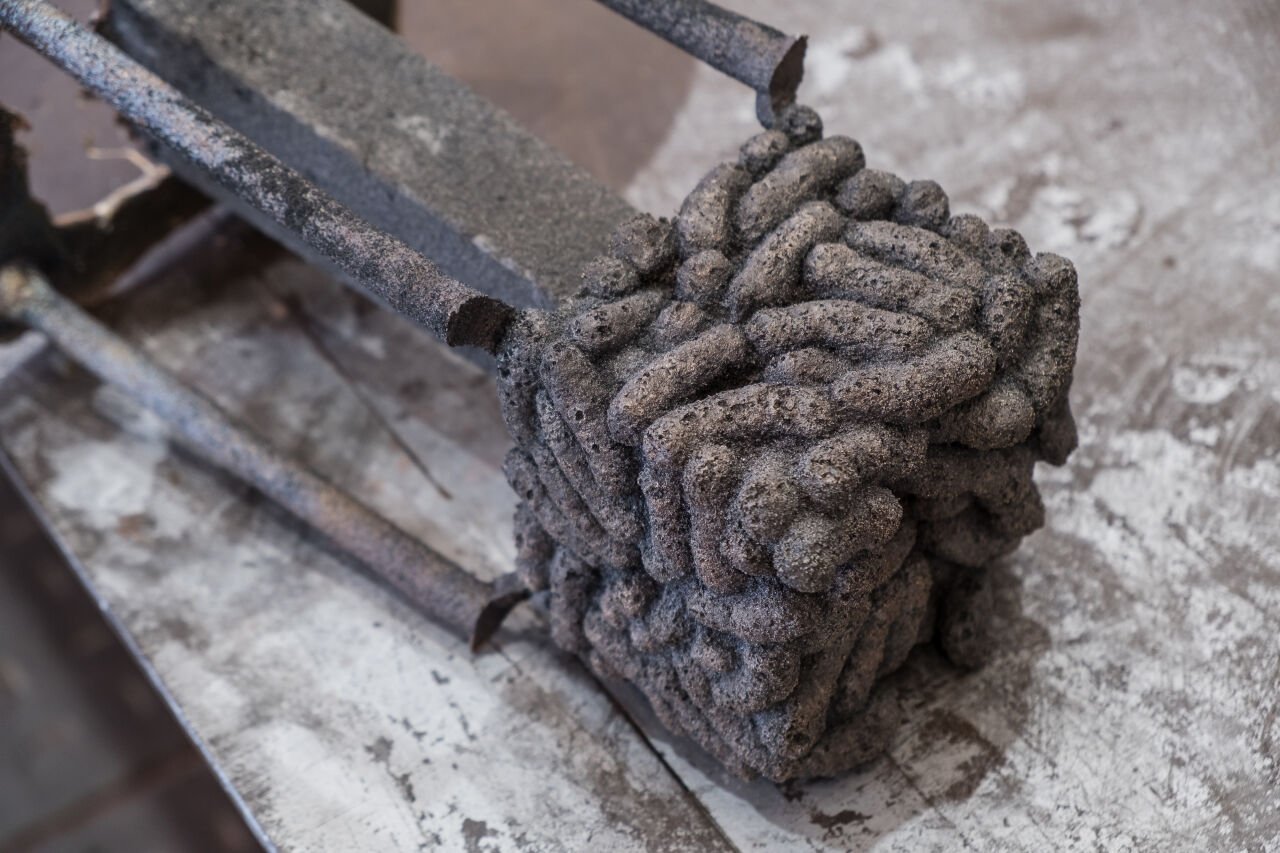
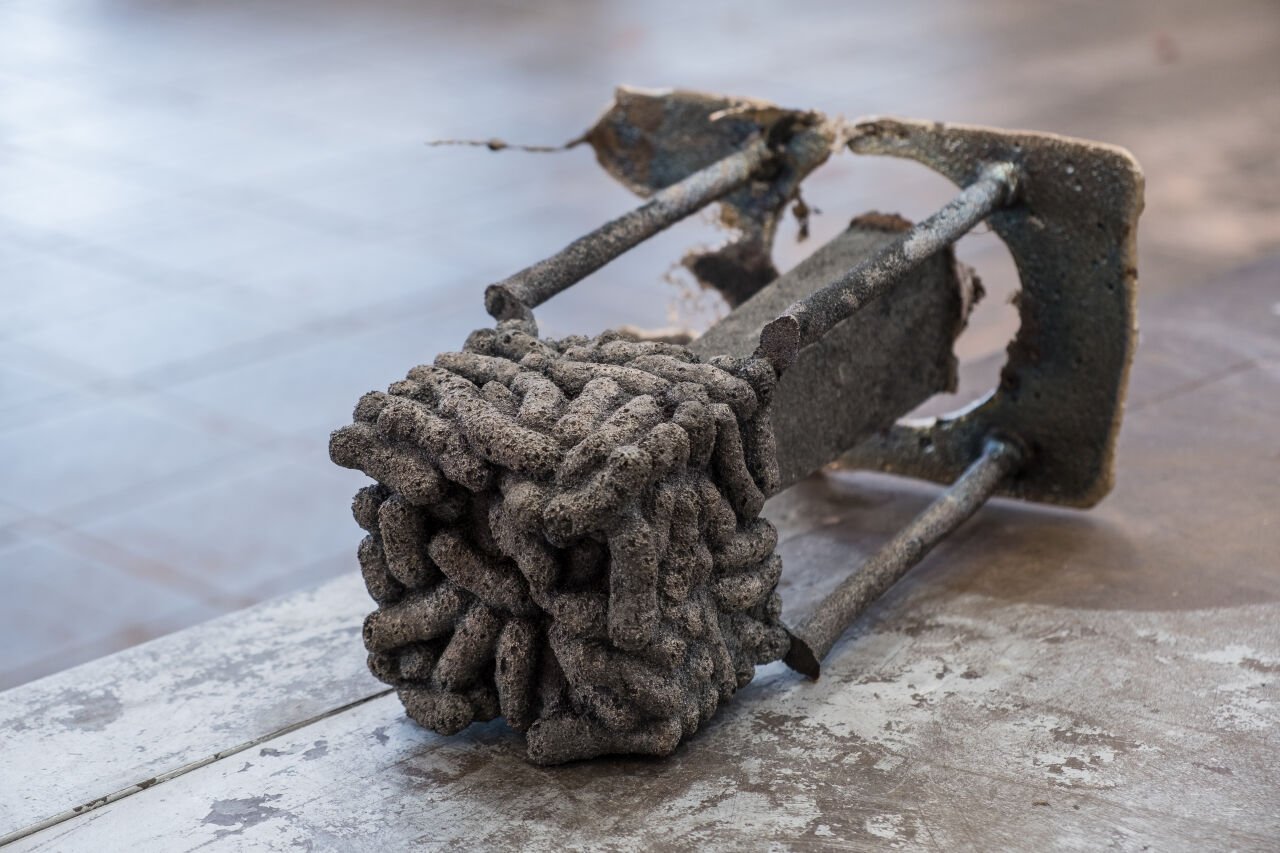
(DC) How do you commence each day when you arrive at your studio?
(EW) Do the thing I have been thinking about since the day before immediately.
(DC) How do you know when an artwork is finished?
(EW) When the changes I want to make to it are actually leading to an entirely other artwork.
(DC) You recently undertook a residency with us at UAP. Can you share some of your thoughts and experiences of this experience?
(EW) Spending time on the foundry floor was fascinating – I think most people who visit can empathise with that. I was thrilled to be there and absorb as much information from my surroundings as possible while working on my sculptures. Something about being in a very large space with such huge projects being fabricated shifted my perspective on my work.
The team have a very diverse skill set and are generous with their knowledge. They balance complex technical expertise with a considerable investment in the conceptual capabilities of an artwork.
(DC) What impact upon your practice do you think the residency at UAP has provided?
(EW) It is hard to be precise because I picked up a wide range of information for very diverse applications. I certainly broadened my knowledge of mould-making through the patternmaking and foundry departments. My time at UAP also helped me feel a little more at ease with public art, in the sense that my time onsite demystified the technical and logistical processes for this type of artmaking.
(DC) What projects are you currently working on?
(EW) I have been thinking a lot about hospitality as enacted both outwardly and internally, a framework to consider the ethical and psychological decision-making involved in consumption and the rhizomatic nature of digestion. My current research thinks through our bodies as micro ecologies internally composting 'food' technology, plant-based and pharmaceutical medicines. The gut has become the lens through which I explore this notion of internal hosting.
I am exploring these ideas through threshold structures such as gates, fences, and archways. I am also continuing my investigation into how furniture can embody hosting in form and function.
In my studio, I always have between 5-10 projects going simultaneously, and I pick them up and let them settle as necessary or as timelines dictate. I am creating a wallpaper, eating utensils, large and small-scale ceramic and timber sculptures, printmaking, and tests for food-based installations.
(DC) What's among the most effective advice you've been given and have learned from?
(EW) From one of my mentors, I learnt the importance of knowing why you are making, and who your audience is. From one of my teachers, I learnt to understand and harness the logic of my chosen materials.
The Queensland Government supported Elizabeth Willing's residency through Arts Queensland.
Interview by Daniel Clifford
#相关文章
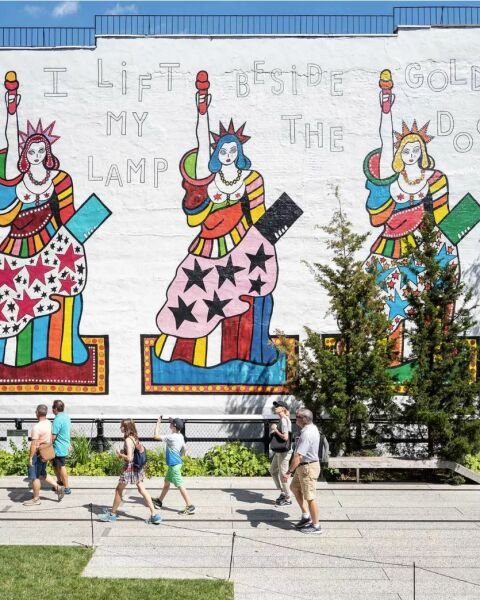
Meet the Contributing Curators for 2022 Public Art Highlights
Delivered in partnership with Artsy, we are thrilled to share this year's contributing curators.
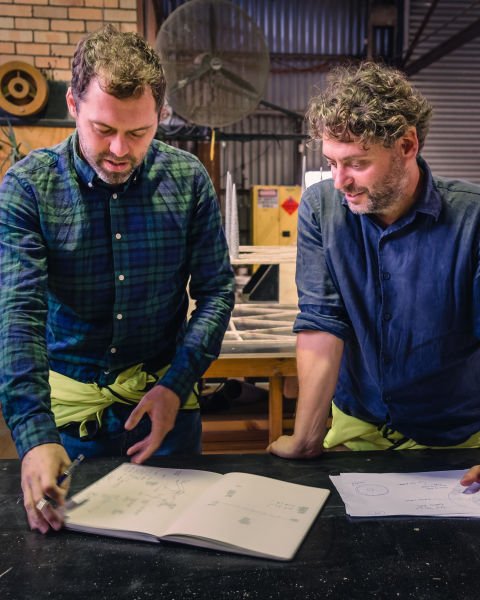
Sebastian Moody and His World Full of Meaning
He is in the business of making compelling stories that connect with audiences. The power of storytelling is central to Sebastian’s work with the prominence of using characteristic text works that speak to the public as messages in communal transitionary spaces, such as vehicular underpasses and building walls.
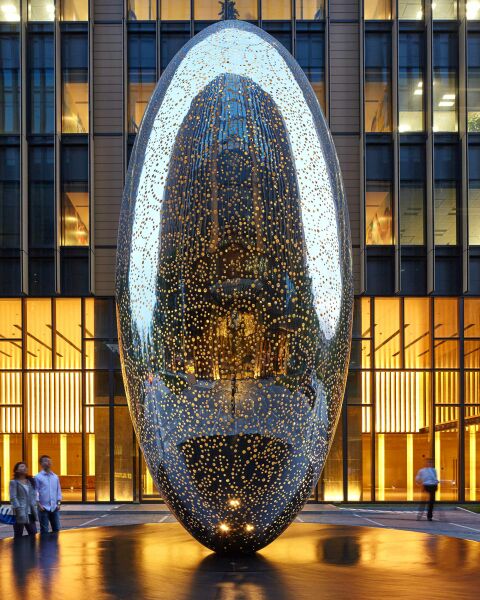
From Ai Weiwei to Zheng Lu: meet UAP, the Dream Builders Bringing Art to Life on a Grand Scale
How UAP founders Daniel and Matthew Tobin and their team have been bringing artworks to life in major sculptural projects across the globe.